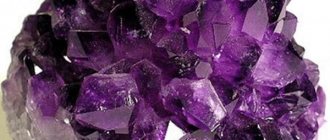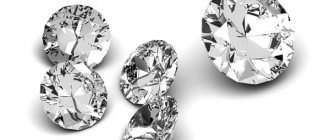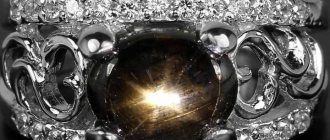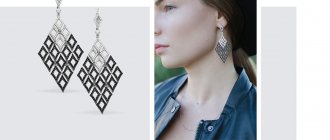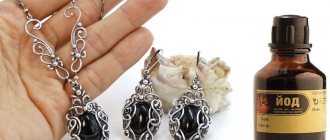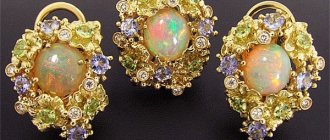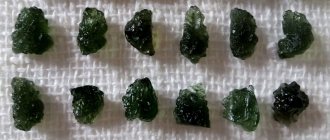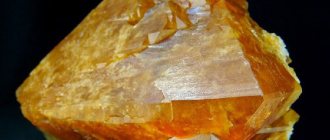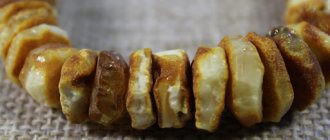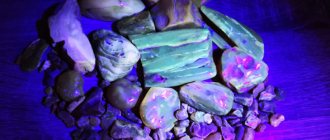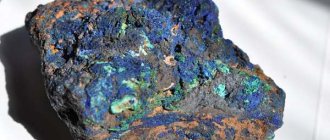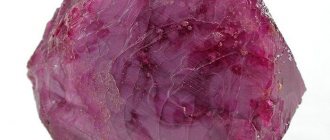December 7, 2021
The properties of rubies have interested humanity since the birth of jewelry in ancient times. The bewitching color of red corundum was glorified in biblical texts, entire works of art were dedicated to it, and for many centuries only representatives of the wealthy classes were allowed to wear the crimson pebble. The passion for ruby sparkle does not go away even today, when it would seem that modern science has studied gems far and wide.
In this large material we will tell you who can wear a ruby according to ancient traditions and beliefs, which zodiac signs are compatible with the stone, as well as some important points regarding the storage and daily care of rare precious crystals.
Where are rubies mined? Why is ruby a gemstone?
Ruby deposits are present all over the world, but they are not the main veins everywhere. Thus, the Russian South Ural mines are rich in pink corundum, but only as an accompanying mineral. The most valued stones are those found in India, Pakistan and some countries of the Gulf of Thailand - Thailand and Cambodia. Several large explored mines are known in Africa - Kenya, Mozambique, Tanzania, and the island of Madagascar.
Corundum itself is a fairly common mineral; one ton of ore can contain up to several grams of pure crystals, but not all of them are suitable for jewelry. The second important point is the need to refine the nuggets in order to obtain the signature crimson-red hue. The procedure is not easy technologically, it requires expensive equipment, which clearly makes the ruby a precious stone.
Interesting fact: The market price of a cut ruby starts at $100 per 1 carat. The fewer inclusions in a stone after the refining procedure, the more expensive it is. The world record holders are gems mined in Myanmar - for their unique star-shaped hue, their starting price at auctions can reach $40,000 without cutting.
Cost of rare finds
Despite the fact that emerald is inferior in price to ruby, sometimes nature creates amazing examples, the cost of which amounts to hundreds of millions of dollars. The most expensive and rare finds include the following amazing stones:
- The Bahia emerald is not just one stone, but a whole druse, weighing more than 380 kg and weighing about 180,000 carats. The huge specimen was valued at $375 million.
- The unnamed emerald , a gem weighing 1.6 kg, was found in 2022 and has not yet received a name. According to preliminary estimates, the gem costs $4 million.
- The Devonshire emerald is a rough mineral owned by the ducal family and weighs 1,384 carats. The cost of the stone is about 7 million dollars.
Among rubies, the following examples have become famous:
- Raja Ratna - the name translates as “king of gems”. The unique stone weighing 2,475 carats is owned by an ordinary lawyer, to whom the mineral was inherited. The owner does not intend to sell the ruby.
- Ruby in the Crown of St. Wenceslas - the size of the stone is 250 carats, the fire ruby crowns the luxurious crown along with other precious minerals. There are terrible legends and stories associated with the decoration.
Emerald Baia
Devonshire Emerald
Ruby in the crown of St. Wenceslas
Raja Ratna
Physical and chemical properties of rubies
According to the chemical formula of corundum, ruby is the same aluminum oxide, crystallized into a crimson-red color under the influence of chromium molecules. In nature, it is a nugget with a range of shades from milky pink to coral with a characteristic trigonal system. In its raw form it resembles spinel.
The physical characteristics of the stones are as follows:
- Hardness on the Mohs scale – 9;
- Density – up to 4.1 grams per cubic centimeter;
- Gloss – matte glass;
- Melting point is over +2050 degrees Celsius.
Despite the hardness values close to diamond, ruby remains a fragile mineral even after professional cutting and refining. The uneven conchoidal fracture makes it vulnerable to falls from great heights. Sudden temperature changes affect color.
Color
The hue of the mineral is provided by the content of chemicals in it:
• due to titanium, vanadium and iron oxide, the stone acquires a blue color, and is then called sapphire; • when the composition contains chromium, iron and titanium, the stone becomes red with shades and is called ruby; • in the case when corundum has no impurities at all, its color will be gray, and such a stone is not considered precious, and is used accordingly for technical and industrial needs.
Depending on the color, each type of corundum had its own original name. However, over time, some of them became outdated, and they were replaced by a common name for all - “fantasy sapphire”. Ruby and sapphire still have separate names.
The proximity of these two stones allows us to say that the difference between them is very insignificant. Anything that cannot be called a ruby can be called a sapphire. Ruby is corundum of exclusively red color. Sapphire can be called not only blue, but also other colors.
Color is a rather relative criterion for dividing a mineral into sapphires and rubies, which makes such identification conditional. The same stone can be described both from one side and from the other, and each case has the right to life.
Magical properties of ruby stone
Whatever the name of rubies - yakhont or carbuncle, from time immemorial human culture has endowed it with mysterious and even magical properties - here are just a few of them:
- Alchemists considered corundums to be a source of inexhaustible vital energy, so the legendary “philosopher’s stone” was depicted as close to the crimson gem.
- Medieval healers were sure that ruby was an amulet against the evil eye and evil thoughts; it was recommended to wear it before meeting a stranger.
- For some time, crystals have gained a specific reputation as love talismans that increase the owner’s sexual attractiveness.
- Among creative people, it is customary to wear stones during a crisis of inspiration - they help to cope with a depressive period and return to the world of art.
There is a significant difference in the philosophy of the West and the East in relation to ruby products. If the inhabitants of the Arab-Asian world romanticize the mineral in the direction of family amulets and health, then in European culture today it is a symbol of individual qualities - courage, self-confidence and readiness to perform unimaginable feats in the name of good.
Why is diamond hard?
It is sometimes hard to imagine that soft black graphite and hard transparent diamond are made of the same atoms - carbon atoms. The properties of these minerals are so different only because they have different types of crystal lattices.
Thus, the crystal lattice of graphite contains layers that are weakly interconnected. Diamond consists of atoms that are very firmly connected to each other in all directions, which is what gives the gem such exceptional hardness.
Healing properties of ruby
Since ancient times, the healing power of the stone has acquired many legends:
- The mineral helps maintain youthful skin if you contact the surface daily, transferring human warmth to the gem.
- The relaxing raspberry shade has a beneficial effect on the blood vessels of the brain.
- By washing your face every morning with cold water from a vessel with a ruby at the bottom, you don’t have to worry about your vitality for the whole day.
Of course, the so-called lithotherapy is not official medicine, it is only a tradition passed down from generations. If you have serious health problems, first of all seek help from a qualified doctor, and amulets will not go anywhere.
What influences the cut of diamonds? Popular forms
Whatever epithets are used in reviews of specific jewelry, the utilitarian task of cutting is only one - to change the angle of refraction of the sun's rays on the surface of the stone so as to create the most brilliant play of light, shimmering with all the colors of the rainbow.
Today, the most popular diamond cut shapes are:
- Circle;
- Oval;
- Baguette;
- Square;
- Marquis;
- Princess;
- Pear;
- Heart;
- Cushion.
There are other styles that have been patented by famous jewelry houses. For example, Tiffany True diamonds are considered the world standard for engagement rings, and the coded form KR-57, which has proven itself for small stones, is generally designated as “Russian Cut” in international catalogs. The process itself has long been automated as much as possible, but special shapes with non-standard symmetry or edges are always processed manually.
Who is ruby suitable for according to their zodiac sign?
Traditionally, astrologers classify crystals of all shades of red as representatives of the fire element, although in the case of ruby there are a couple of interesting differences:
- Aries, the beloved child of Mars, who opens the zodiac circle, needs constant energy replenishment, which crimson crystals give him.
- Leo is the obvious successor of Aries' endeavors, for whom it is more important to demonstrate his own confidence, and such jewelry will do the job perfectly.
- Sagittarius - the last of the big three - asks corundums for help in amorous matters, which the stones will definitely help if you wear them daily.
- Scorpio, a suddenly immersed water sign, thanks gems for peace of mind in moments of despair and outbursts of uncontrollable anger.
- Pisces, the most sophisticated and creative sign, seeks inspiration among minerals, receiving it in abundance, especially when it comes to painting, music and other arts.
But those who astrologers do not advise to get carried away with ruby jewelry are the Earth signs - Taurus, Virgo and Capricorn. For them, the best amulets will be emeralds and green stones.
Alexandrite
This gem is capable of changing its color - this is its main value. Natural alexandrite never ceases to amaze people with its beauty and variability. Stones that can change color from deep green to red can cost $10,000 to $37,000 per carat.
Along with natural alexandrite, there are similar gems - some varieties of garnet. Artificially grown alexandrite changes color from lilac to gray and greenish, but, unfortunately, this is the color that many people consider the “correct” one.
The largest deposit of alexandrites is located in Russia. It was there that this stone was first discovered. By the way, the gem received its name in honor of the young Tsarevich Alexander.
Nowadays, alexandrites, especially large ones, are very rare. Of course, this further increases the price, thanks to which alexandrite is among the ten most expensive stones.
How to wear ruby jewelry correctly?
Generally accepted etiquette standards and advice from experienced stylists state:
- Do not wear more than two items encrusted with red gems at the same time. They are so self-sufficient that they can cause the effect of satiety.
- Always clean the insert thoroughly before going out into the world - the energy of the stone requires special attention to hygiene.
- Experts in esotericism do not advise wearing rubies together with silver items - the best setting for it would be exclusively 585 gold.
- Wear ruby jewelry on your hands more often. It is believed that it is through the fingers or hands that the most powerful energy hidden inside corundum is transmitted.
Combining a ruby with other stones is much easier than some precious gems, because the soft crimson hue may well become the highlight of a jewelry set. Emerald is considered complimentary, as it emphasizes the warmth of the red spectrum and contrasts quite brightly with the insert. You need to be careful with sapphires so as not to outshine the deep blue of the related crystal, but diamonds are appropriate for any design.
An underrated emerald stone
In fact, emeralds, which practically do not come to mind when listing the most famous expensive gems, can be a worthy competitor to diamonds. If a mineral has no defects, has a deep, rich color and exceptional transparency without any inclusions, such a stone is more valuable than diamonds. It's all about natural rarity - such emeralds are actually much rarer than all other minerals.
The cost of an emerald depends not least on the deposits in which these emeralds are mined. For emerald, the “password” is Colombia, namely the Muso mine, where the most beautiful stones of the best quality are mined.
A carat of exceptional quality emerald is valued more than a carat of diamond.
Is ruby a masculine or feminine stone?
For a long time, a ruby ring was considered a purely masculine piece of jewelry, symbolizing power and the unconditional power of solar energy. It is still given to newly appointed bosses or very serious gentlemen. Such inlay can say a lot about the owner, especially if he has exceptional taste in clothes too.
As for women's jewelry with rubies, things are much more interesting. In addition to rings, manufacturers guarantee a huge selection of earrings, pendants and neck pendants, brooches, necklaces and decorative bracelets. Many designer series are easily assembled, so for those who dreamed of creating a truly royal style for special occasions, this is one of the best options.
Interesting fact: In medieval Europe, most red gemstones, including rubies, were called carbuncles. It was the carbuncle that was considered to be an amulet for women in labor - it was placed under the feather bed before bed so that the child would be born healthy.
What is the difference between a diamond and a diamond? Key points
Diamond is a colorless crystalline carbon compound, one of the hardest substances on the planet, which, due to its unique appearance and physical properties, has become in demand in many areas of production, including jewelry.
A diamond is a cut diamond created specifically for inlaying jewelry. It is not used for industrial or domestic purposes; its task is the aesthetic design of gold products. The word itself means “brilliant” in French.
How to distinguish a ruby from a fake?
There are proven methods of examination that can be carried out directly in the store:
- A natural ruby almost always has internal defects - uneven color, microcracks and inclusions, which can be seen with a regular magnifying glass.
- Look through the stone at the bright light from the incandescent lamp. The texture of the edges should darken noticeably due to the special crystal structure.
- If possible, illuminate the decoration with an ultraviolet ray. A synthetic fake will sharply change color towards the cloudy orange spectrum.
- Cracks inside a gem are never even. The natural origin of the defect gives a matte zigzag line.
- Run your fingernail across the surface of the inlay - a real mineral will leave a fairly deep scratch on it in a second, but not the slightest trace should remain on the crystal itself.
- Corundum, like diamond, accumulates heat extremely slowly - it cannot be heated by breathing or prolonged contact with human skin.
It is very easy to distinguish a ruby from a garnet that has been clarified in a laboratory. Apply a neodymium magnet to the pebble - only grenades are attracted to it. For maximum reliability, use electronic scales that will record any changes in the weight of the jewelry when it is near a magnetized surface.
Transparent jadeite
This type of jade is called imperial. The price tag starts at 20 thousand dollars per carat.
It will not be easy to get such a gem of natural origin even for those who are willing to spend a lot of money. The most expensive stones in the world cost a lot of money because they are rare. But those who want to admire this unique stone of incredible beauty can go to Thailand - the Emerald Buddha is not made of emerald at all, but of greenish transparent jadeite.
How to care for a ruby?
Having become the proud owner of a piece of ruby jewelry, it is worth remembering several important rules for wearing and caring so that the precious inlay will delight you for many years:
- Corundum does not like sudden temperature changes and long contact with ultraviolet radiation. Don't forget about this when going out wearing jewelry in cold winter weather.
- You can clean gems only with specialized gentle surfactants, or with a regular soap solution in warm water at room temperature.
- Rubies must be stored separately from other stones in a dry place, preferably wrapped in a piece of fabric without long lint.
The Line of Love online store offers a unique catalog of jewelry with rubies, where you will find rings, earrings, bracelets, signets, necklaces and pendants at the most affordable prices. Advantageous offers for regular customers, as well as exclusive services will make shopping much more enjoyable, especially when the holidays are approaching and gifts have not yet been purchased.
Share
Areas of application of minerals
Ruby is most in demand in jewelry. It has been used as a stone for jewelry for a very long time. This stone found its wonderful place in the crowns of crowned persons and in their richly inlaid rings. However, in addition to jewelry beauty, the mineral is useful in the production of watches. It is also used in quantum electronics. In industrial applications, artificial rubies are predominantly used, because the use of natural rubies is too expensive.
In order to improve clarity and color, rubies and sapphires are further processed, which then fetch a very good price.
